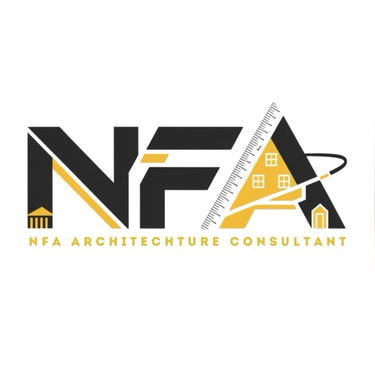2025’s Top Residential Architecture Trends: Sustainable Design, Smart Homes, and Modern Aesthetics
Mark W.
5/14/20253 min read


The world of residential architecture is evolving rapidly, with 2025 shaping up to be a landmark year for innovation, sustainability, and modern living. Homeowners and developers are increasingly seeking designs that not only look stunning but also prioritize environmental responsibility, technological integration, and flexible living. In this blog, we explore the most influential trends set to define residential architecture this year, offering inspiration and insight for anyone planning a new build or renovation.
1. Sustainable Design: Building for a Greener Future
Sustainability is no longer just a buzzword-it’s a core principle guiding residential architecture in 2025. Architects are embracing eco-friendly materials, energy-efficient systems, and designs that minimize environmental impact. Key elements include:
Net-zero energy homes: These residences generate as much energy as they consume, often through solar panels, super-insulated walls, and high-performance windows. The goal? A neutral energy footprint and drastically reduced carbon emissions.
Circular design: Materials are chosen for their ability to be recycled or reused, supporting a circular economy. Adaptive reuse-repurposing existing structures instead of building new-also helps reduce waste and resource depletion.
Biophilic design: Incorporating natural light, greenery, and outdoor spaces improves occupant well-being and supports sustainability. Features like green roofs and indoor gardens are increasingly common.
2. Smart Homes: Intelligent Living for Modern Lifestyles
The integration of smart technology is transforming residential architecture. In 2025, homes are designed to be as intelligent as the devices within them, offering convenience, efficiency, and enhanced security.
AI-powered automation: From climate control to lighting and security, AI systems learn and adapt to occupants’ preferences, creating highly personalized environments.
Internet of Things (IoT): Everyday objects-from refrigerators to thermostats-are interconnected, allowing seamless control and automation throughout the home.
Enhanced security: Biometric authentication, AI-driven threat detection, and advanced encryption ensure that smart homes are not only convenient but also secure.
Smart home technology is no longer a luxury-it’s becoming a standard expectation in new residential builds.
3. Minimalist Yet Functional Spaces
Minimalism continues to be a dominant trend, but with a renewed focus on functionality. Homeowners are seeking uncluttered, practical spaces that maximize comfort and utility:
Open-plan layouts: Expansive, flexible spaces that can adapt to changing needs-ideal for remote work, entertaining, or relaxation.
Modular furniture: Adaptable pieces that can be rearranged or repurposed, supporting compact living without sacrificing style.
Warm minimalism: The use of textured walls, natural materials, and soft color palettes adds depth and warmth to minimalist interiors, moving away from stark, cold aesthetics.
4. Biophilic and Nature-Inspired Design
Connecting with nature is a key theme in 2025’s residential architecture. Biophilic design goes beyond adding plants-it’s about integrating natural elements into the very fabric of the home.
Large windows and skylights: Maximize natural light and blur the boundaries between indoors and outdoors.
Natural materials: Stone, wood, and bamboo are favored for their sustainability and aesthetic appeal.
Indoor-outdoor living: Retractable walls, rooftop gardens, and open courtyards create seamless transitions to outdoor spaces, enhancing well-being and expanding usable living areas.
5. Mixed Textures and Bold Materials
2025 is seeing a rise in the creative use of materials and textures to add character and depth to residential exteriors and interiors:
Steel and glass: These materials are being used to create bold, industrial-inspired facades and expansive open spaces.
Combining rough and smooth textures: Stone, wood, and metal are mixed to craft visually striking and unique designs, making each home truly one-of-a-kind.
Futuristic lighting: LED and smart lighting systems are used not just for illumination, but to create dramatic visual effects and enhance mood throughout the day.
6. Adaptive Reuse and Flexible Spaces
With urban land at a premium, adaptive reuse and flexible design are gaining traction:
Garden suites and laneway houses: These secondary dwellings make efficient use of land, providing additional living space or rental income opportunities.
Multi-purpose rooms: Spaces that can easily transition from home office to guest room or gym, reflecting the changing needs of modern families.
7. The Affordability Factor
While some modern trends, like smart home systems or net-zero construction, may have higher upfront costs, they often deliver long-term savings through reduced energy bills and maintenance. Minimalist design and adaptive reuse can even lower overall expenses by simplifying construction and maximizing existing assets.
Conclusion: Shaping the Homes of Tomorrow
The top residential architecture trends of 2025 reflect a holistic approach-balancing sustainability, technology, and aesthetics to create homes that are not only beautiful but also smart, green, and adaptable. As these trends become mainstream, homeowners can expect greater comfort, efficiency, and a stronger connection to nature in their living spaces.
If you’re considering a new build or renovation and want to incorporate the latest in sustainable and smart home design, contact NFA Architecture today. Our team specializes in innovative, eco-friendly solutions tailored to your lifestyle and vision.
